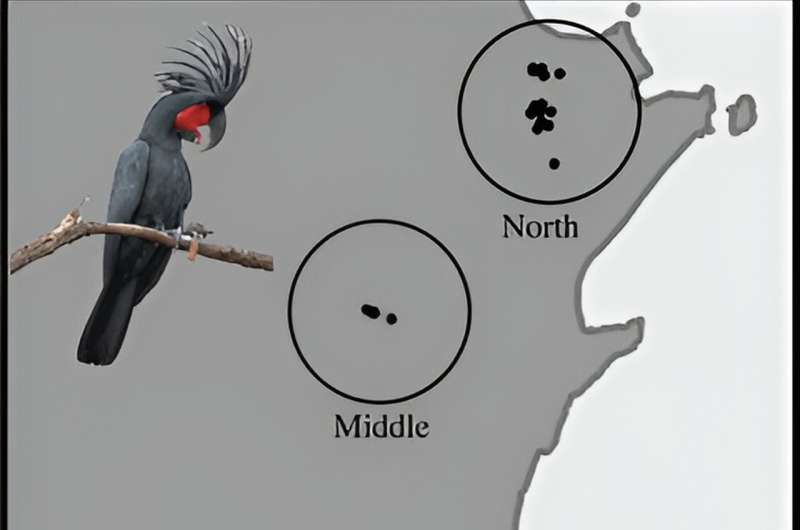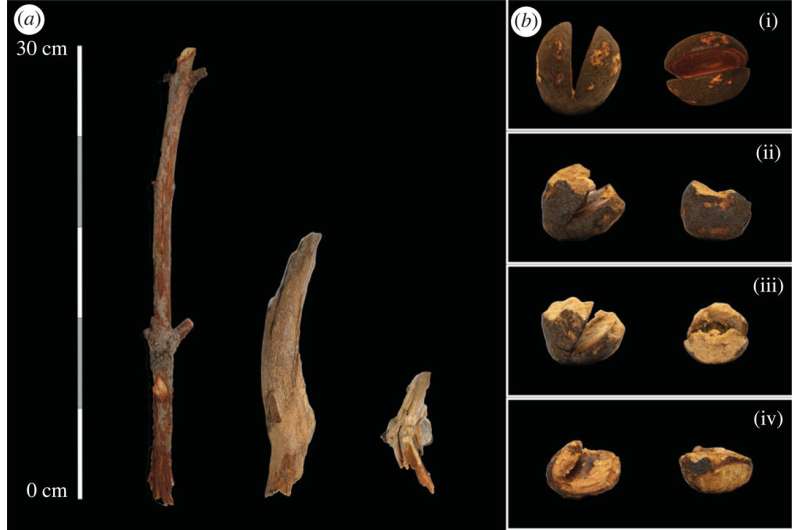September 13, 2023 report
This article has been reviewed according to Science X's editorial process and policies. Editors have highlighted the following attributes while ensuring the content's credibility:
fact-checked
peer-reviewed publication
trusted source
proofread
Palm cockatoos whittle twigs to make drumsticks for tapping on tree limbs

A pair of biologists at Australian National University, working with one colleague from the University of Queensland and another from James Cook University, has found that male palm cockatoos tap out unique rhythms on tree branches using custom-made drumsticks. In their project, reported in Proceedings of the Royal Society B, R. Heinsohn, C. N. Zdenek, D. Appleby and J. A. Endler studied the wild birds living in Kutini-Payamu National Park, Queensland.
Over the past several decades, animal scientists have found that human behavior is not nearly as unique as was once thought. For example, evidence of tool use has been found in many species, most of which surrounds food gathering, preparing or eating. In this new effort, the research team found evidence of an animal that fashions a tool and then uses it to attract the attention of a female by tapping out a special song for her.
To learn more about tool use by male cockatoos, the research team observed multiple specimens as they chose a suitable twig, pared down parts of it, and then used the result as a sort of drumstick to tap out a rhythm on a tree branch. They noted that most of the birds preferred to use a twig as their tool of choice, but a few also used a seed pod.
The researchers noted that the birds tended to discard their tool after use—that prompted team members to seek out and collect the tools to learn more about them. In all, they recovered 256 of them. Approximately 89% of the tools had been crafted from small twigs. They noted that some of the birds had used both kinds of tools.
They also found that the twigs had been crafted differently from bird to bird and that twig types differed significantly—some of the birds preferred long and thin twigs, while others preferred those that were short and stubby. The research group also found that the birds all had unique drumming patterns.

The researchers report that there did not seem to be any evidence of copying regarding twig choice, fashioning design or tapping patterns. This, they note, suggests that the birds likely learned their skills from their fathers while still young.
More information: R. Heinsohn et al, Individual preferences for sound tool design in a parrot, Proceedings of the Royal Society B: Biological Sciences (2023). DOI: 10.1098/rspb.2023.1271
Journal information: Proceedings of the Royal Society B
© 2023 Science X Network



















